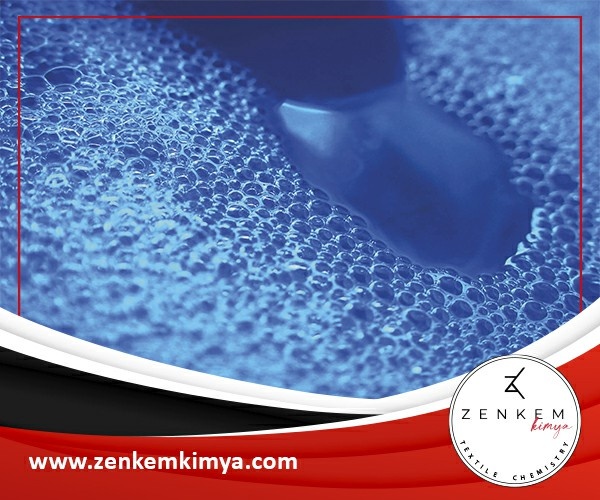Exactly How Defoamers Improve Effectiveness in Production and Production

Understanding Defoamers
Defoamers play a crucial function in different manufacturing processes by properly combating the development of foam, which can impact and interrupt operations item top quality. Foam can develop in various contexts, such as during mixing, home heating, or chemical responses, potentially leading to ineffectiveness and inconsistencies in products. The device through which defoamers operate usually includes minimizing the surface area stress of the liquid, allowing bubbles to integrate and increase to the surface area quicker, where they can then break.
Reliable defoamers not only lessen foam formation yet also preserve compatibility with the item, making certain that there are no adverse impacts on the last result. Understanding the residential properties and features of defoamers is vital for makers aiming to optimize their processes, boost efficiency, and keep the stability of their products (defoamers).
Secret Benefits of Defoamers
Using defoamers in producing procedures offers a series of substantial benefits that improve functional effectiveness and product quality. Among the main benefits is the reduction of foam formation throughout manufacturing, which can obstruct equipment and interfere with workflows. By minimizing foam, defoamers guarantee smoother operations, resulting in decreased downtime and upkeep prices.
In addition, defoamers improve item consistency by avoiding air entrapment, which can endanger the integrity of the end product. This is specifically important in markets where aesthetic look and structure are crucial, such as in paints, finishes, and food. Improved product quality not just fulfills customer expectations yet also reinforces brand credibility.
Moreover, defoamers can aid in optimizing resource usage. By boosting the efficiency of basic material usage, they contribute to cost savings and decreased waste, straightening with sustainability goals. Lastly, the application of defoamers can bring about much shorter handling times, enabling manufacturers to raise production capability without substantial capital investment - defoamers.
Applications in Numerous Industries
In making procedures throughout numerous sectors, the application of defoamers plays an important function in improving efficiency and product high quality. These chemical additives are utilized in fields such as food and drink, pharmaceuticals, and textiles to alleviate foam-related difficulties.
In the food and beverage market, defoamers are important during the fermentation process, preventing foaming that can disrupt manufacturing and spoil the item's integrity. In the pharmaceutical market, defoamers are used in the solution of fluid medications, ensuring uniformity and stability while reducing waste.
Textile manufacturing likewise benefits from defoamers, as they are utilized in coloring and finishing procedures to advertise even circulation of dyes and chemicals. This application not only improves the end product's look yet also decreases the amount of water and power eaten throughout production.
Furthermore, in the paper and pulp discover this info here industry, defoamers help maintain process performance by minimizing foam that can impede machinery efficiency. On the whole, the varied applications of defoamers across these industries emphasize their value in maximizing manufacturing processes and delivering premium items.

Choosing the Right Defoamer
Selecting a suitable defoamer is vital for making best use of efficiency and top quality in making procedures. The option of defoamer depends read the full info here on different variables, including the details application, the kind of foam being generated, and the solution of the item being made.

To start with, consider the chemical compatibility of the defoamer with other components in your solution. A defoamer that engages adversely with various other components can detrimentally affect product quality. Furthermore, the temperature level and pH variety during processing are critical; some defoamers do ideally under certain conditions while becoming ineffective in others.
Second of all, examine the defoamer's performance qualities, such as its capability to swiftly minimize foam and its perseverance during production. It is important to choose a product that not just removes foam rapidly however additionally maintains its effectiveness over time.
Last but not least, take into consideration ecological and governing variables, particularly if your production process undergoes rigorous compliance criteria. Picking a low-toxicity or naturally degradable defoamer can assist satisfy sustainability goals while guaranteeing functional performance. By attentively assessing these requirements, makers can make enlightened decisions that enhance efficiency and product integrity.
Ideal Practices for Implementation
Successful implementation of defoamers in producing procedures needs careful preparation and adherence to best practices. First, it's important to perform a detailed assessment of the manufacturing atmosphere. This includes understanding the specific application, the kinds of lathering representatives existing, and the functional conditions. Selecting the ideal defoamer, as formerly discussed, is important; guarantee it works with the products included and article source attends to the identified frothing concerns successfully.
Following, keep clear communication with all stakeholders, including drivers and quality control teams. Training sessions can assist make sure that every person comprehends the application procedures, potential effects on product top quality, and safety and security factors to consider. Implementing a trial phase can also be advantageous; display performance very closely to gauge performance and make needed modifications.
Additionally, regular testing and surveillance of foam degrees can supply important understandings right into the defoamer's efficiency in time. Changing dosages in action to changes in manufacturing variables will assist maintain optimum efficiency - defoamers. Documenting all procedures and results promotes continual enhancement, enabling for fine-tuning of defoamer use and improving general efficiency in manufacturing procedures.
Conclusion
In summary, defoamers play an essential role in boosting efficiency within production and production procedures. By reducing foam formation and facilitating bubble coalescence, defoamers add to boosted product high quality, consistency, and operational performance.
The advantages expand to item top quality and price financial savings, as defoamers help simplify processes.Defoamers play an important role in numerous making procedures by effectively combating the formation of foam, which can disrupt procedures and affect product top quality. Comprehending the homes and features of defoamers is crucial for makers intending to optimize their processes, improve productivity, and preserve the integrity of their items.
Making use of defoamers in making procedures provides a variety of substantial advantages that improve operational performance and item quality.In addition, defoamers enhance item uniformity by stopping air entrapment, which can endanger the honesty of the last item.